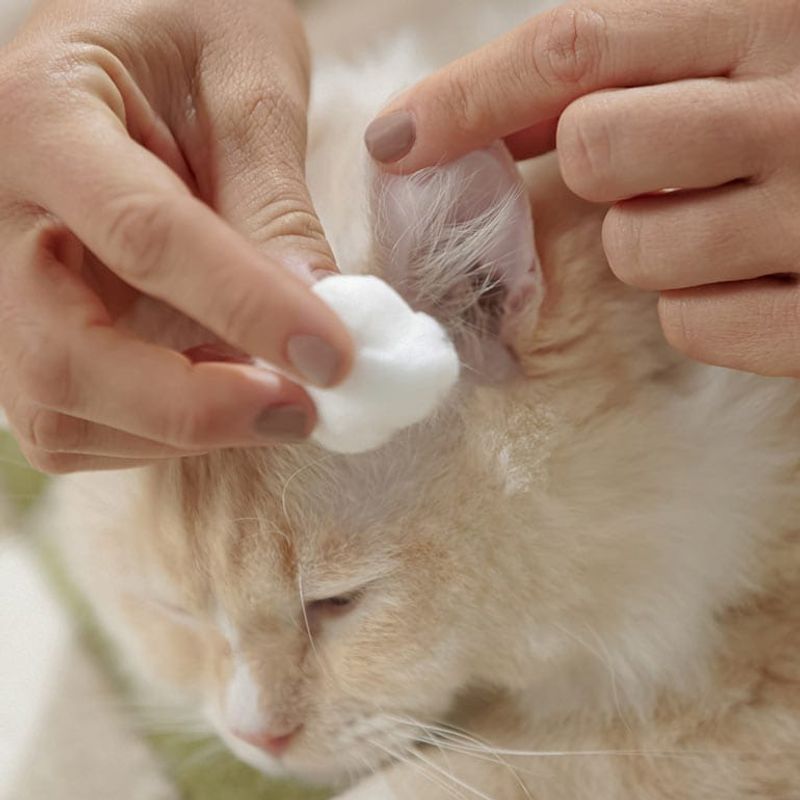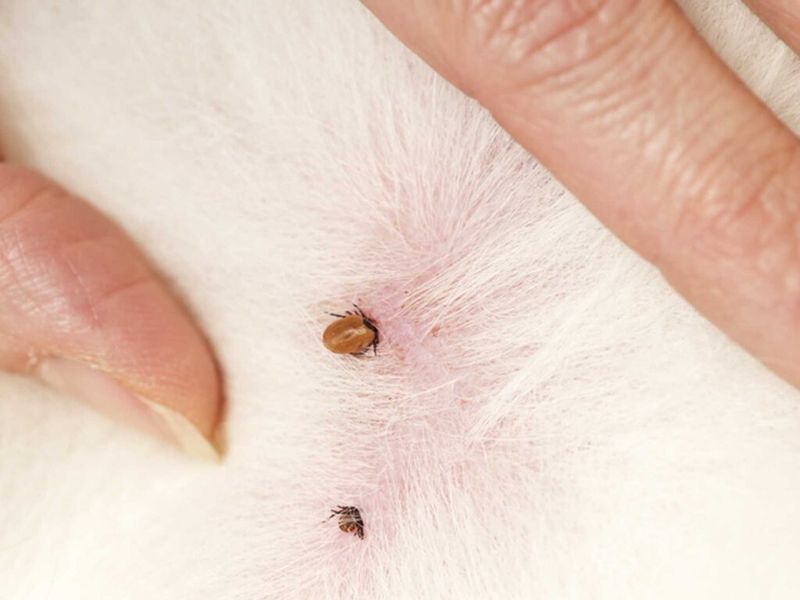📖 Table of Content:
Ticks can sneak past even the most watchful pet parent. These tiny parasites are masters of disguise, often hiding in the most unexpected nooks and crannies on your cat’s body. Their bites can cause irritation, allergic reactions, and transmit serious illnesses like Lyme disease and cytauxzoonosis, making regular tick checks a crucial part of pet care.
Unlike dogs, cats are natural groomers and often do a good job of keeping pests at bay. However, ticks are persistent and know exactly where to hide to avoid detection. These critters prefer warm, dark, and sheltered areas where they can feed undisturbed, and many of these spots are places you might rarely examine during everyday cuddles or grooming sessions.
To help you stay one step ahead, we’ve put together a list of seven sneaky spots where ticks love to hide on cats. Each of these areas offers the perfect environment for a tick to latch on—and each deserves your attention during your next pet inspection. Here’s what to look for and why these places are so tick-friendly.
1. Under the Collar
Often ignored during quick checks, the area beneath your cat’s collar can be a haven for ticks. The warmth and tightness of the collar create a dark, humid environment that is ideal for ticks to thrive. Since collars are rarely removed, ticks can stay undisturbed for extended periods. This spot is especially risky for outdoor cats or those who wear flea collars that aren’t regularly adjusted or checked. A tick under the collar may go unnoticed until it has become engorged, increasing the risk of disease transmission. Gently slide your fingers under the collar regularly and run them along the skin to feel for any unusual bumps. Always remove the collar for a thorough inspection after walks or outdoor play.
2. In and Around the Ears
Surprisingly, the delicate folds of a cat’s ears are one of the most common hiding spots for ticks. These folds are easy for a tick to grip and difficult for a cat to reach while grooming. Additionally, the thin skin of the ear makes it a convenient feeding site. Ticks can burrow deep inside the ear canal or nestle into the outer crevices, remaining hidden for days. You might notice excessive scratching, head shaking, or even redness in the area as early warning signs. Using a flashlight or gently folding the ear can help you get a clearer view during your inspection. Always be cautious when examining the ears, as cats can be sensitive to touch in this area.
3. Between the Toes
Without a doubt, this is one of the most overlooked areas when checking for ticks on cats. The tiny crevices between a cat’s toes offer ticks ample cover and protection from detection. Even experienced pet owners can miss these pests unless they actively spread the toes apart. Ticks in this location can cause irritation, limping, or excessive paw licking, which are easy to mistake for minor injuries. Your cat’s frequent paw cleaning won’t always dislodge a deeply embedded tick. Use your fingers to gently part the toes and examine the skin closely, especially after time spent outdoors. If your cat is fidgety, try checking while they’re drowsy or relaxed.
4. Under the Tail
Rarely do pet parents consider lifting the tail when checking for parasites, but this area is a favorite for ticks. The base of the tail is warm, moist, and well-protected—conditions that ticks love. Since cats often dislike having their tails touched, it’s easy for this zone to go unchecked. Yet, ticks here can cause significant discomfort or even go unnoticed until they’re fully engorged. Be mindful of signs like excessive tail twitching, biting near the base, or a visible lump. When inspecting, gently lift the tail and check the fur and skin, especially around the anus and tail base. Keep this area in your routine checks even if your cat is mostly indoors.
5. Around the Eyes and Eyelids
Though less common, ticks have been found hiding dangerously close to a cat’s eyes. The soft skin and sparse fur in this region make it vulnerable to tick attachment. Because it’s such a sensitive area, cats often react quickly to discomfort here, which may include pawing at their face or squinting. A tick near the eye may appear as a small bump or speck that doesn’t move. Use caution and good lighting when inspecting this area to avoid startling your cat. You may need a partner to gently hold your cat steady during a close look. Never attempt to remove a tick near the eye without professional help if it’s deeply embedded.
6. Under the Front Legs (Armpits)
Another easily forgotten location is the area where your cat’s front legs meet the body—the armpits. These tucked-away spaces are warm and shaded, ideal for ticks to attach unnoticed. Cats don’t groom this area as frequently, and owners may hesitate to check due to the ticklish or sensitive nature of the spot. Ticks here can cause local irritation, swelling, or a reluctance to walk or play. Try to gently lift the front leg and examine both the skin and fur for any irregularities. If your cat resists, try calming them with treats or wait until they are sleepy and relaxed. Don’t skip this area—it’s a favorite hiding spot.
7. Along the Groin and Belly Area
Last but certainly not least, the soft belly and groin region are prime real estate for ticks. These areas have thinner skin and are less exposed to air and grooming, which ticks take full advantage of. When a cat lies down or curls up, the area becomes even warmer, offering ideal conditions for feeding. You may notice a tick here during a belly rub—if your cat allows one! Take advantage of grooming time to part the fur in this area and inspect closely for any unusual bumps or dark spots. Watch for signs like redness or your cat licking excessively in the region. Even indoor cats should be checked here after potential exposure.







